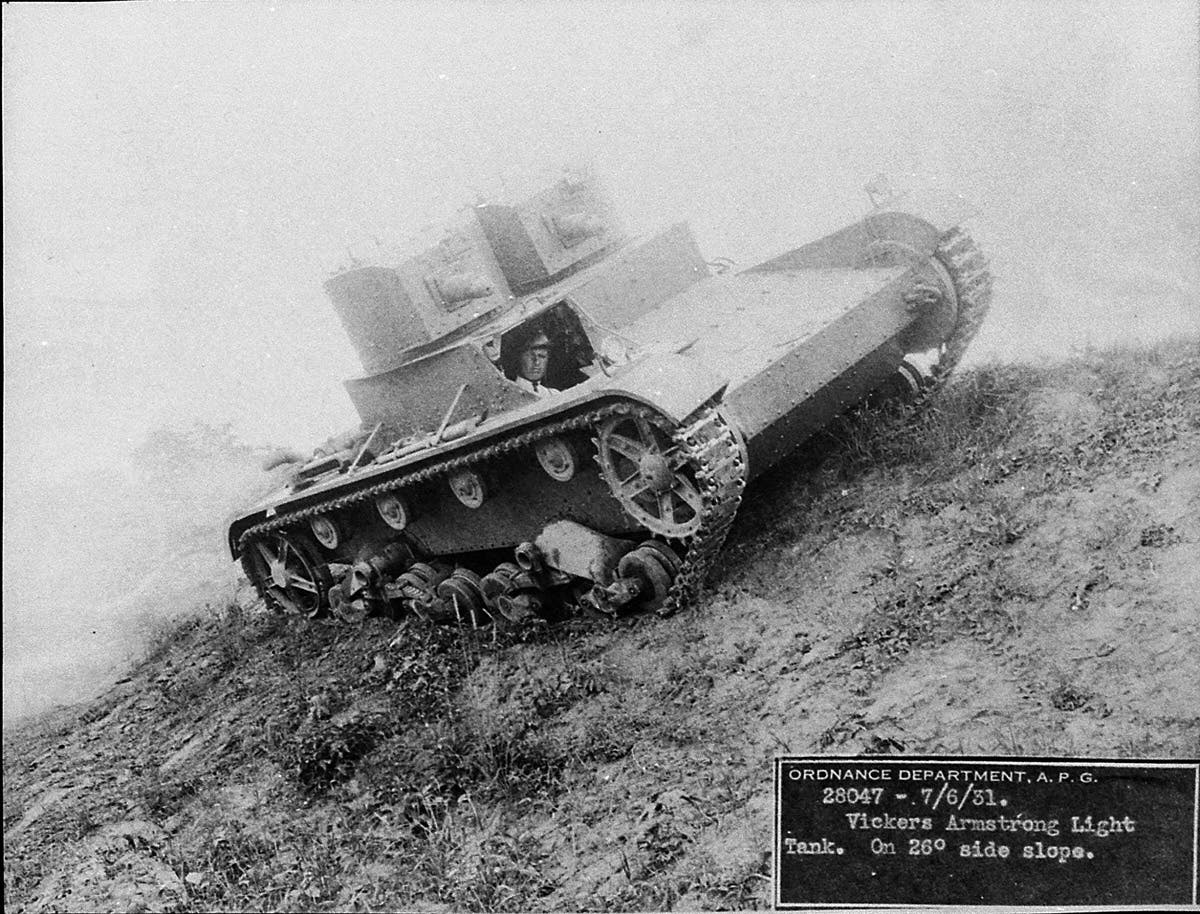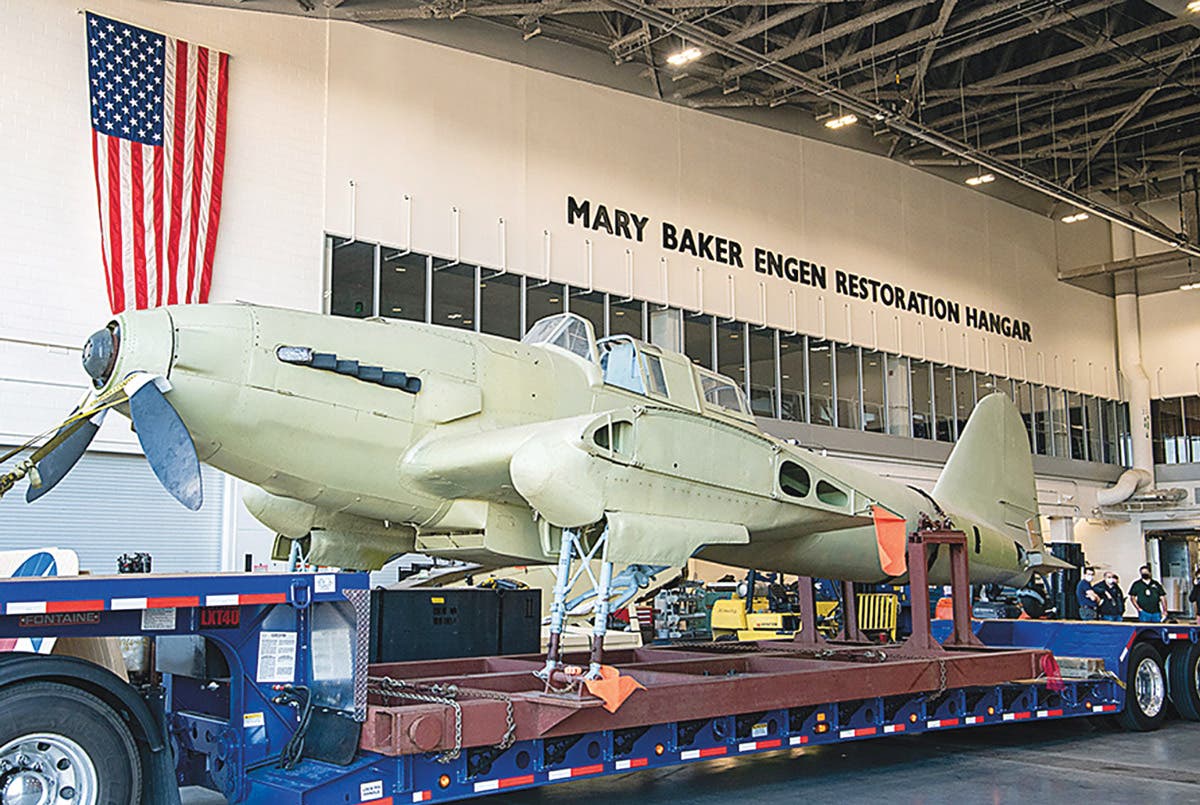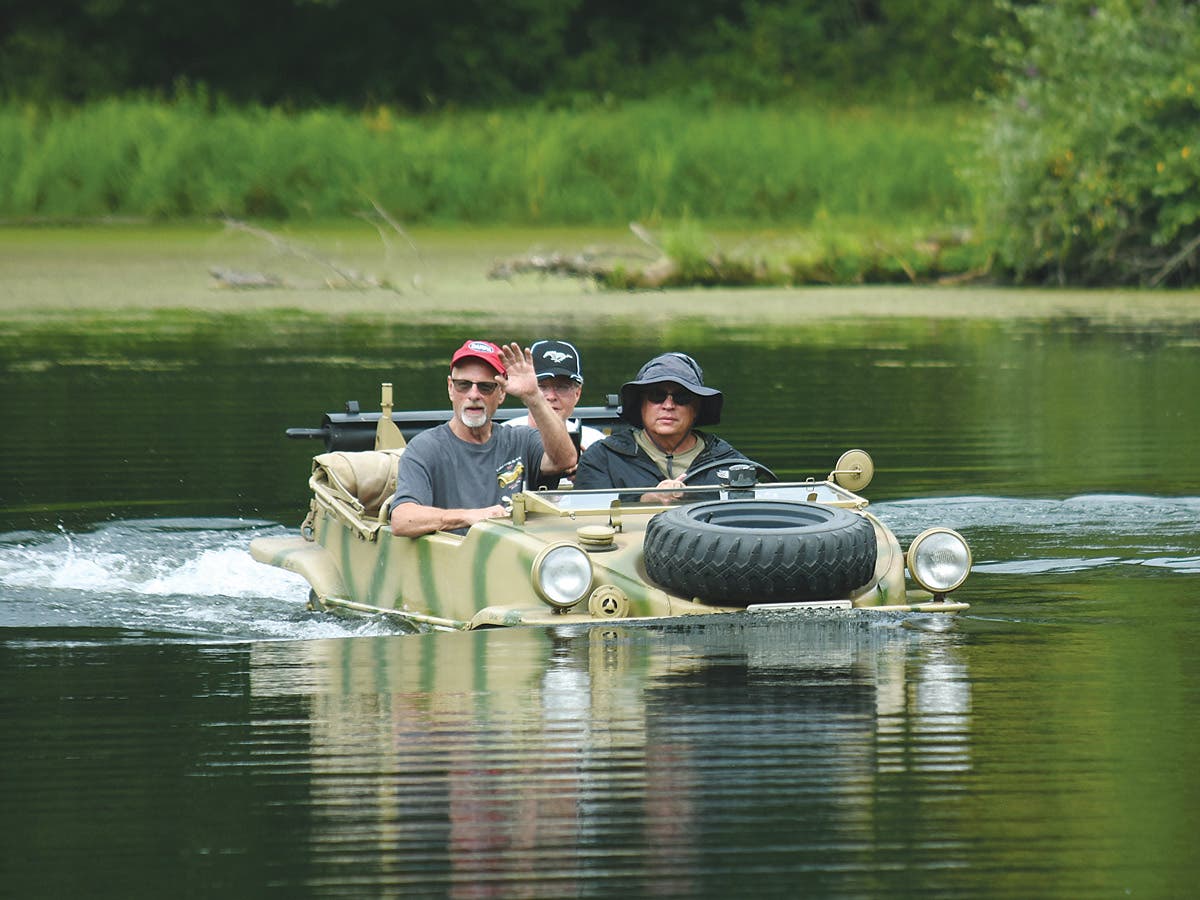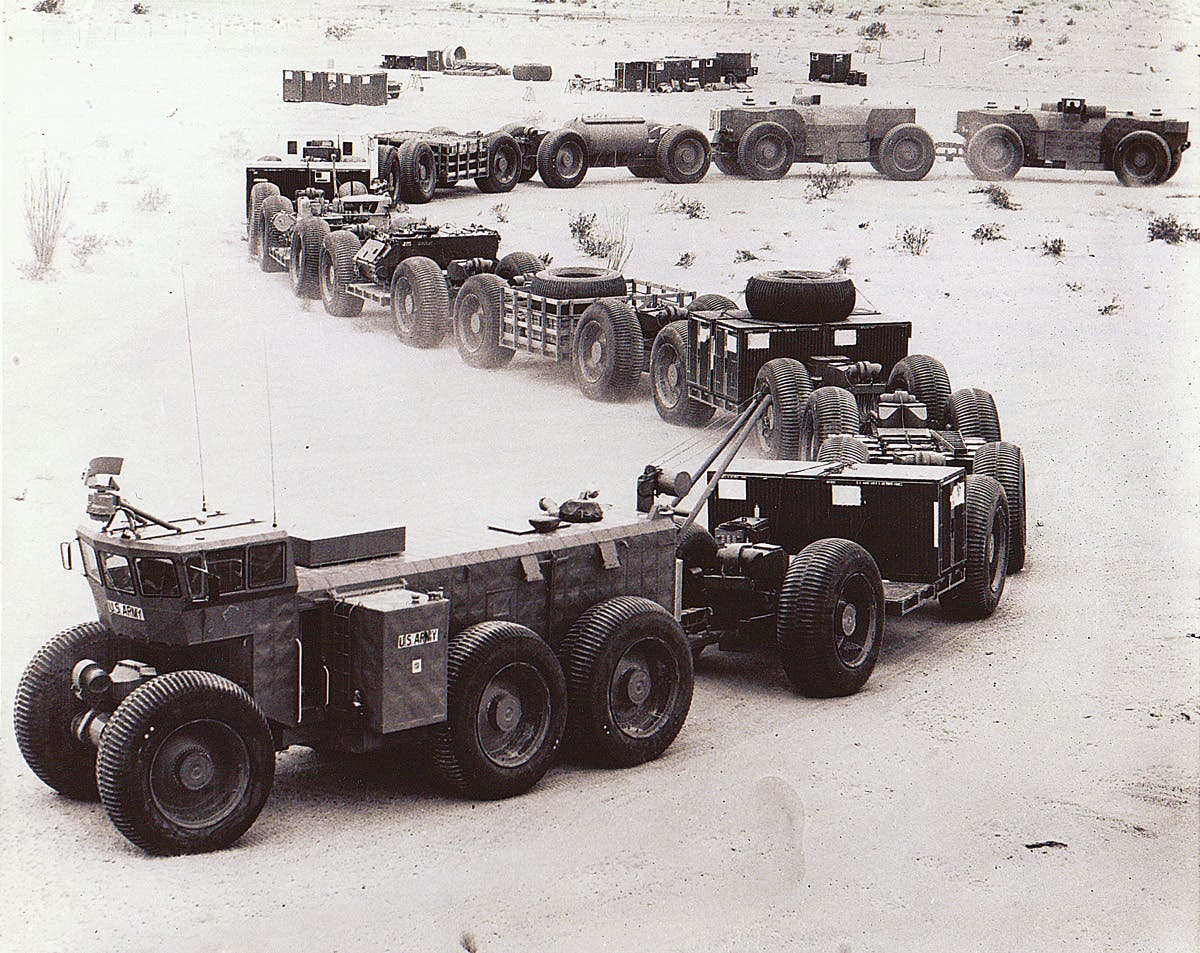Developing the M41 Walker Bulldog Tank
The maneuverable and lightweight M41 tank was all about speed
The M41 began life in the late 1940s as the T41. It was to be the lightweight member of a family of three tanks. The two other tanks in this new “family” were the “medium” tank called the T42, and a “heavy” tank, the T43. The T42 would become the M47 Medium Tank, and the T43 would become the M103 Heavy Tank. The M41 was named the Walker Bulldog in honor of General W. W. Walker who died in a jeep accident in Korea in 1951.
The doctrine of vehicle design for U.S. forces in the late forties and fifties was commonality. These new tank designs were no exception; there were common components among all three of these tanks, including similar range finding and sighting equipment.
The M41 was designed around the power pack, which included a rear-mounted transmission and final drive. At the other end of the hull was the driver’s compartment. The Bulldog had torsion bar suspension much like that of the M24. The Walker had only a single driver, and unlike its predecessors, had no hull mounted machine gun.
The Bulldog’s 76mm M32 was the first U.S. tank gun equipped with a bore evacuator. Its purpose was to clear the gun tube after firing. The turret had a large bustle that housed both the radio gear and a large ventilation fan. The bustle also acted as a counterweight balance for the main gun. The Bulldog was not designed as a battle tank, rather its job was reconnaissance, seeking out the enemy and radioing back their strength and position. Rather than heavy armor, it relied on high speed for protection.
The primary difference between the M41 and M41A1 was inside the turret. The A1s had improved gun laying equipment in order to meet the new (at that time) Army policy of being able to open fire within five seconds of deciding to engage a threat. Externally, they can be identified by the use of more cast armor in the M41, including the area along the lower turret side. The cast armor is only present on the front of the M41A1 turret.
There are two areas of caution for operating an M41. First if the turret is rotated while the driver’s hatch is open and his head exposed, he will be decapitated. Second, the exposed mufflers turn cherry red after a few minutes of operation.
Early M41s have a plain driver’s hatch which would first raise slightly, then pivot to the right. Later M41s were equipped with infrared driving lights and a mount was added to the hatch for an infrared M19 night viewing periscope. The hatch could not be opened until the periscope was removed.
The M41’s Continental engine was an air-cooled, 6-cylinder, opposed, and supercharged gasoline engine. The use of air-cooled engines in tanks was not new. At the outset of WWII many U.S. tanks were powered by air-cooled radial engines, but the advantages seemed to have been forgotten in later years.
The M41 was among the last U.S. armored vehicles to be gasoline powered. Diesel was recognized as being less flammable and providing greater range and torque. The AOS-895 originally installed was carburated, but later versions were fuel injected to improve the vehicle’s range. M41s and M41A1s powered with the fuel injected engines were M41A2 and M41A3, respectively.
All M41s had the Allison CD-500-3 Cross Drive transmission. This type of transmission combines the transmission and steering unit into one relatively small unit. This same transmission design was used in other vehicles that share the same general chassis as the M41, including the M44 and M52 SPG and the M42 SPAAG (Duster).
Early models mounted a .50 cal Browning machine gun as the coaxial weapon to the left of the main 76mm gun. Later vehicles mounted a .30 cal instead, and the .30 calibers were retrofitted to the early tanks as time went by. Initially, it was thought that the .50 cal would save main gun rounds against targets. But after evaluation, the additional number of rounds that could be carried for the smaller .30cal outweighed the .50’s hitting power.
More than 3,700 M41 series Light Tanks were built, and Cadillac Motors of GM was the primary manufacturer.The simple yet robust construction of the M41 has made it popular with not only collectors, but also a number of foreign countries’ armed forces. Although the M41 Walker Bulldog appeared too late for U.S. use in Korea and too early for Vietnam, secondary users put it to work in India-Pakistan and Vietnam, and among other locals.
You may also enjoy:
David Doyle's earliest published works were occasional articles in enthusiast publications aimed at the historic military vehicle restoration hobby. This was a natural outlet for a guy whose collection includes several Vietnam-era vehicles such as M62, M123A1C, M35A2, M36A2C, M292A2, M756, and an M764.
By 1999, his writing efforts grew to include regular features in leading periodicals devoted to the hobby both domestically and internationally, appearing regularly in US, English and Polish publications.
In 2003, David received his a commission to write his first book, The Standard Catalog of U.S. Military Vehicles. Since then, several outlets have published more than 100 of his works. While most of these concern historic military hardware, including aircraft and warships, his volumes on military vehicles, meticulously researched by David and his wife Denise, remain the genre for which he is most recognized. This recognition earned life-time achievement in June 2015, when he was presented Military Vehicle Preservation Association (MVPA) bestowed on him the coveted Bart Vanderveen Award in recognition of “...the individual who has contributed the most to the historic preservation of military vehicles worldwide.”
In addition to all of publishing efforts, David is the editor of the MVPA’s magazine, History in Motion, as well as serving as the organization’s Publications Director. He also maintains a retail outlet for his books online and at shows around the U.S.








